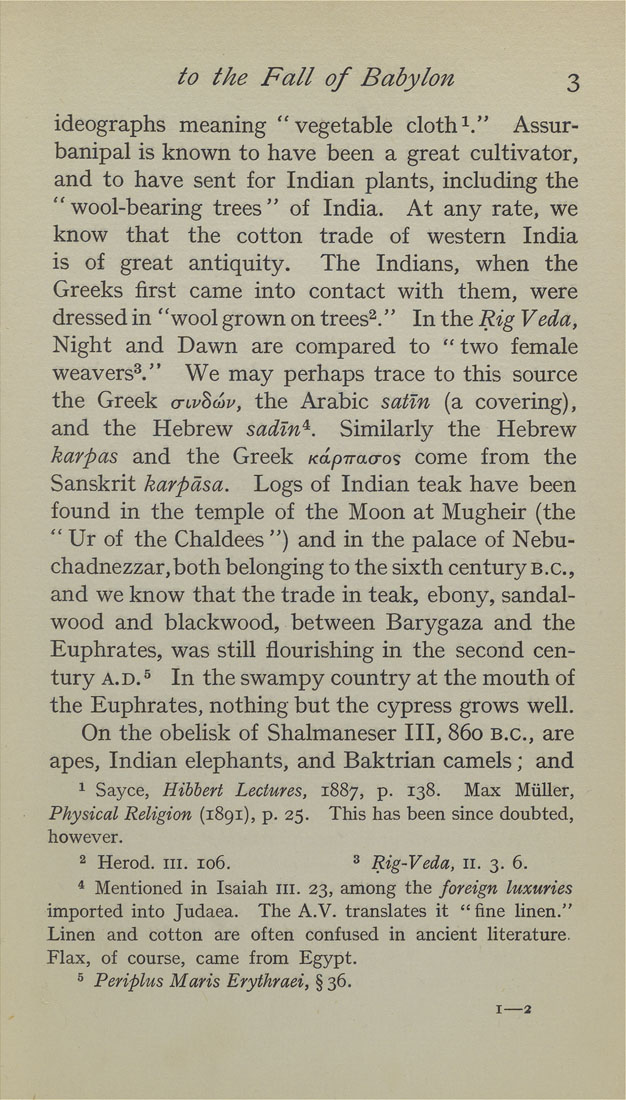^he Fall of Babylon
ideographs meaning "vegetable clothi." Assur¬
banipal is known to have been a great cultivator,
and to have sent for Indian plants, including the
"wool-bearing trees" of India. At any rate, we
know that the cotton trade of western India
is of great antiquity. The Indians, when the
Greeks first came into contact with them, were
dressed in "wool grown on trees^." In the Rig Veda,
Night and Dawn are compared to " two female
weavers^." We may perhaps trace to this source
the Greek cnvSan', the Arabic satm (a covering),
and the Hebrew sadin^. Similarly the Hebrew
karpas and the Greek Kap-rrao-o^ come from the
Sanskrit karpdsa. Logs of Indian teak have been
found in the temple of the Moon at Mugheir (the
" Ur of the Chaldees ") and in the palace of Nebu¬
chadnezzar, both belonging to the sixth century B.C.,
and we know that the trade in teak, ebony, sandal¬
wood and blackwood, between Barygaza and the
Euphrates, was still flourishing in the second cen¬
tury A.D.^ In the swampy country at the mouth of
the Euphrates, nothing but the cypress grows well.
On the obelisk of Shalmaneser III, 860 B.C., are
apes, Indian elephants, and Baktrian camels; and
1 Sayce, Hibbert Lectures, 1887, p. 138. Max Miiller,
Physical Religion (1891), p. 25. This has been since doubted,
however.
2 Herod, iii. 106. ^ Rig-Veda, 11. 3. 6.
^ Mentioned in Isaiah in. 23, among the foreign luxuries
imported into Judaea. The A.V. translates it "fine linen."
Linen and cotton are often confused in ancient literature.
Flax, of course, came from Egypt.
^ Periplus Maris Erythraei, § 36.
|








